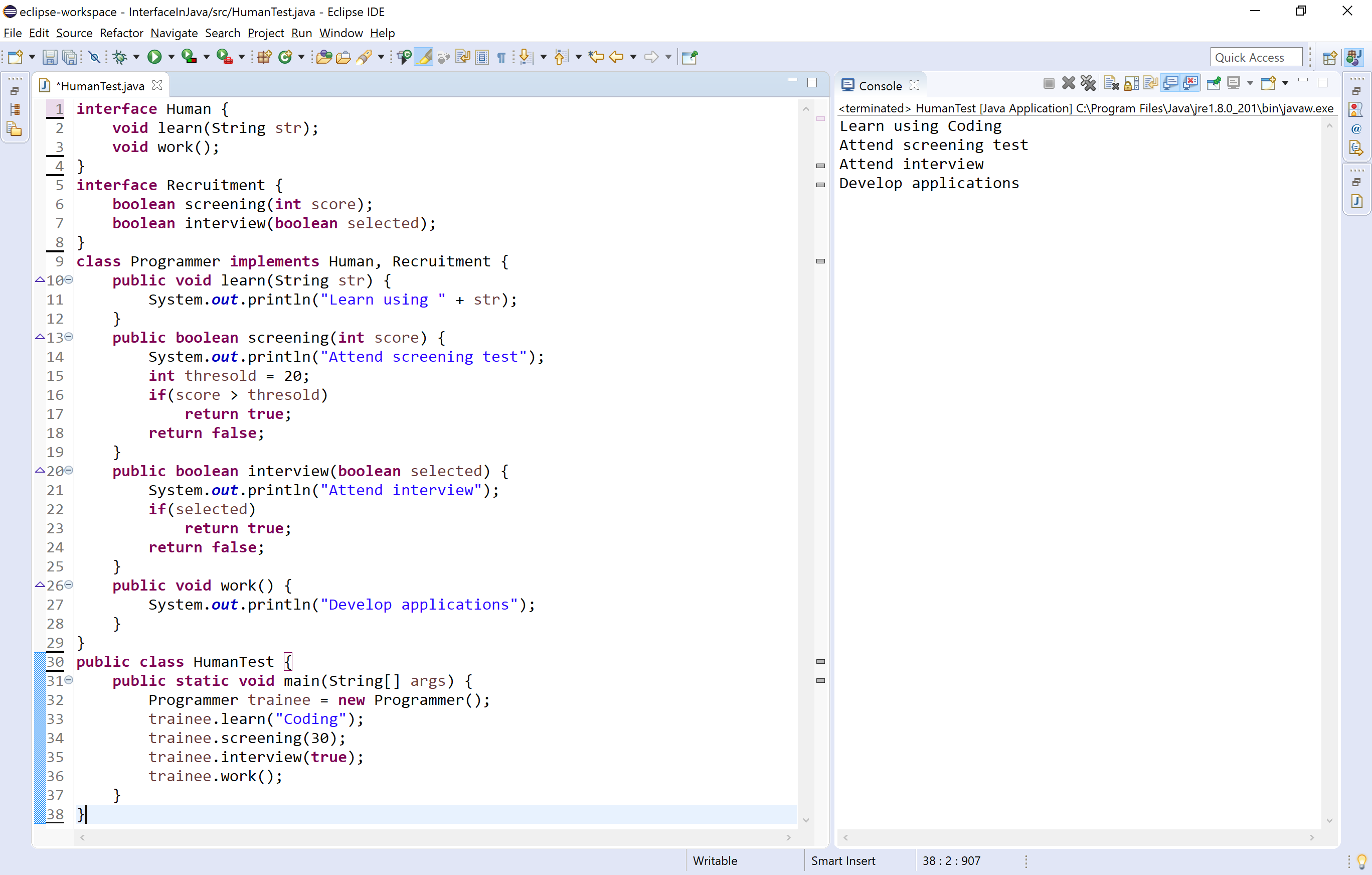
The implements keyword appears in the class declaration following the extends portion of the declaration. If a class does not perform all the behaviors of the interface, the class must declare itself as abstract.Ī class uses the implements keyword to implement an interface. Get familiar with the concept of Java Classes and. When a class implements an interface, you can think of the class as signing a contract, agreeing to perform the specific behaviors of the interface. To make an object of a user-defined class comparable, the class must implement the Comparable interface. Methods in an interface are implicitly public. You do not need to use the abstract keyword while declaring an interface.Įach method in an interface is also implicitly abstract, so the abstract keyword is not needed.

Thus, an interface includes method signatures.
#Java interface rules code
Interfaces have the following properties −Īn interface is implicitly abstract. A Java interface should only be used as an interface in the above generic sense, to define how the class behaves for the benefit of client code using the class, without specifying any implementation. Any number of abstract method declarations\ Here is a simple example to declare an interface − Exampleįollowing is an example of an interface − The interface keyword is used to declare an interface. The only fields that can appear in an interface must be declared both static and final.Īn interface is not extended by a class it is implemented by a class.Īn interface can extend multiple interfaces. However, an interface is different from a class in several ways, including −Īn interface does not contain any constructors.Īll of the methods in an interface are abstract.Īn interface cannot contain instance fields. We use the implements keyword to implement an interface.

To use an interface, other classes must implement it. Interfaces appear in packages, and their corresponding bytecode file must be in a directory structure that matches the package name. Implementing an Interface Like abstract classes, we cannot create objects of interfaces. The byte code of an interface appears in a. java extension, with the name of the interface matching the name of the file. Since Java 8, you can also create default methods. Unless the class that implements the interface is abstract, all the methods of the interface need to be defined in the class.Īn interface is similar to a class in the following ways −Īn interface can contain any number of methods.Īn interface is written in a file with a. Interface in Java is a bit like the Class, but with a significant difference: an interface can only have method signatures, fields and default methods. And an interface contains behaviors that a class implements. But a class describes the attributes and behaviors of an object. Private, public, or package-private may only be a nesting class. Writing an interface is similar to writing a class. Below are some rules to control the visibility: A top-level class (a class whose name is the same as the Java source file that contains it) can also be either a public or a private package (without an access modifier) and cannot be a private one. Method bodies exist only for default methods and static methods. A class implements an interface, thereby inheriting the abstract methods of the interface.Īlong with abstract methods, an interface may also contain constants, default methods, static methods, and nested types.
#Java interface rules android
Android App Development with Kotlin(Live) An interface is declared by using the interface keyword.


#Java interface rules full
Full Stack Development with React & Node JS(Live).Java Programming - Beginner to Advanced Interfaces in Java provide a way to define a contract or a set of methods that a class must implement if it claims to support that interface.Data Structure & Algorithm-Self Paced(C++/JAVA).Data Structures & Algorithms in JavaScript.Data Structure & Algorithm Classes (Live).


 0 kommentar(er)
0 kommentar(er)
